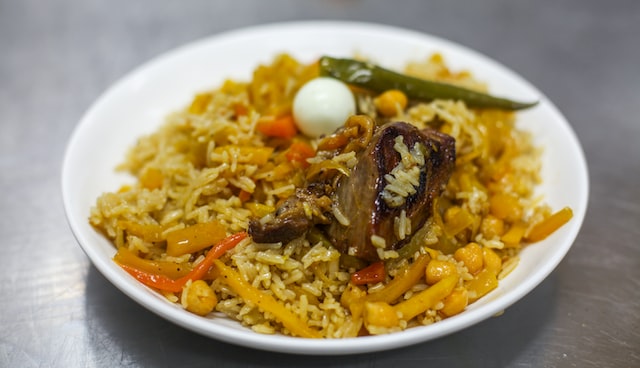Uzbek cuisine is celebrated for its simplicity, robust flavors, and hearty nature.
Influences from as far as Turkey to China have shaped Uzbek gastronomy, resulting in a palate that prominently features lamb, beef, potatoes, rice, wheat, garlic, and onions. To enhance the taste, a blend of herbs and spices, including cumin, fennel, basil, coriander, cinnamon, and bay leaves, are often used.
In this article we’ll introduce you to Uzbek food including the most popular main dishes, soups, salads and even some desserts!
As Uzbek cuisine can be quite a controversial one, you’ll either be licking your lips or running to the nearest salad bar faster than you can say “plov“!
List of Uzbek Dishes
Plov
If you only ever try one Uzbek dish then make sure it’s this one! Uzbekistan’s national dish, plov, is a rice dish cooked with chunks of lamb, carrot, onion, garlic and often with chickpeas and dried fruits.
Every region of Uzbekistan has its own version of the national dish including different ways of preparing and cooking the dish.
For instance, in Samarkand, ingredients are layered and cooked with a lighter oil, resulting in a lighter, more delicate texture.

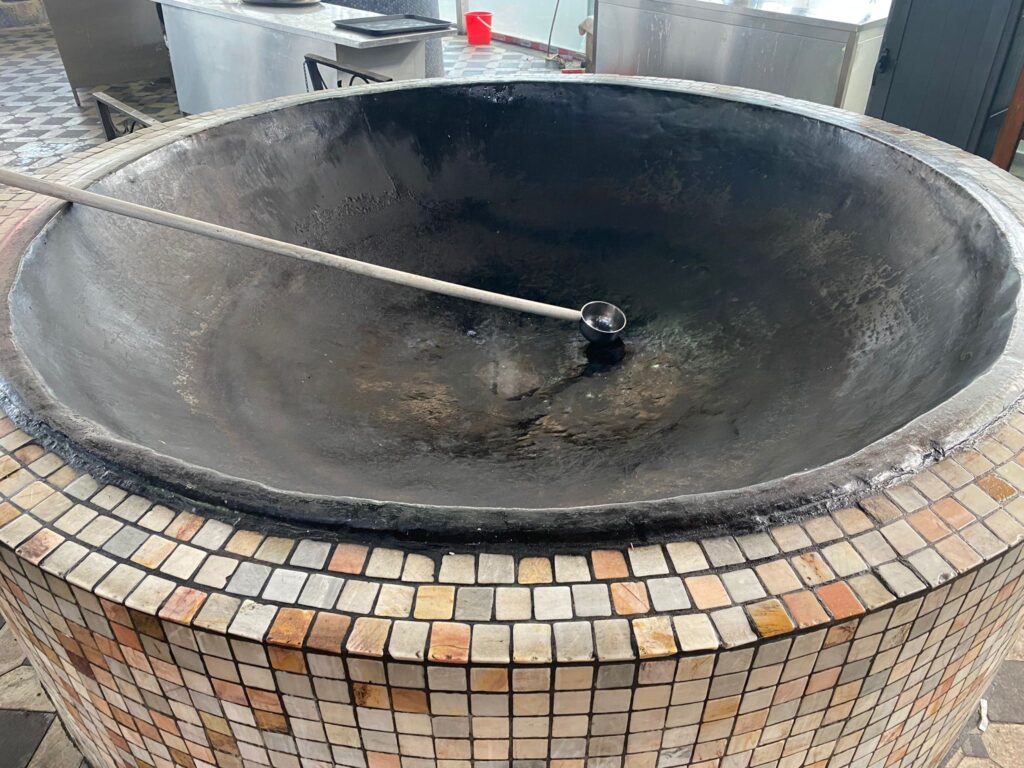
Plov is often cooked with a whole head of unpeeled garlic and can be served with many additions such as quail eggs, horse sausage, and dolma (grape leaves stuffed with minced meat and rice).
Many cities have their own plov center, which cook up huge amounts of plov in a deep iron pot known as a kazan or qozon.
Shashlik
Shashlik is Uzbekistan’s version of shish kebab. Originally made from lamb or goat meat, shashlik originated from Central Asia and the Caucasus regions. The name shashlik is simply the Russian word for skewered meat as its popularity spread across much of the former Soviet Union.
Traditionally, the meat is skewered on metal rods and cooked on a grill over coals. These days, shashlik can come in many forms including chicken, fish, vegetables and even quail.
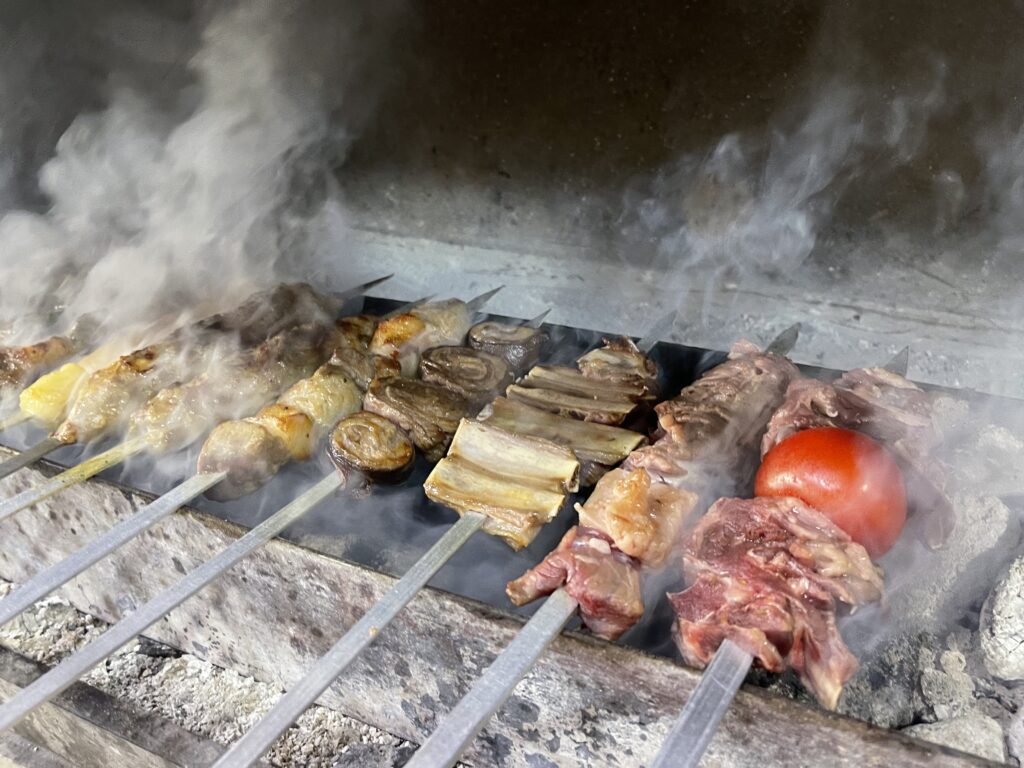
In Uzbekistan, the most popular form of shashlik is made of alternating beef cubes and slices of beef fat. The meat is often marinated in vinegar to soften its texture as well as spices such as cumin for extra flavor.
Uighur Lagman
Originating in Chinese Uighur culture, Uzbeks have adopted this noodle dish as their own. Lagman comes in many forms but can generally be described as something like a noodle soup.
A specialist chef prepares the noodles by hand and they are cooked alongside lamb or beef, vegetables and spices. It can be cooked with cabbage, potatoes, peppers, radish, onion, garlic, tomatoes and served with chopped greens.
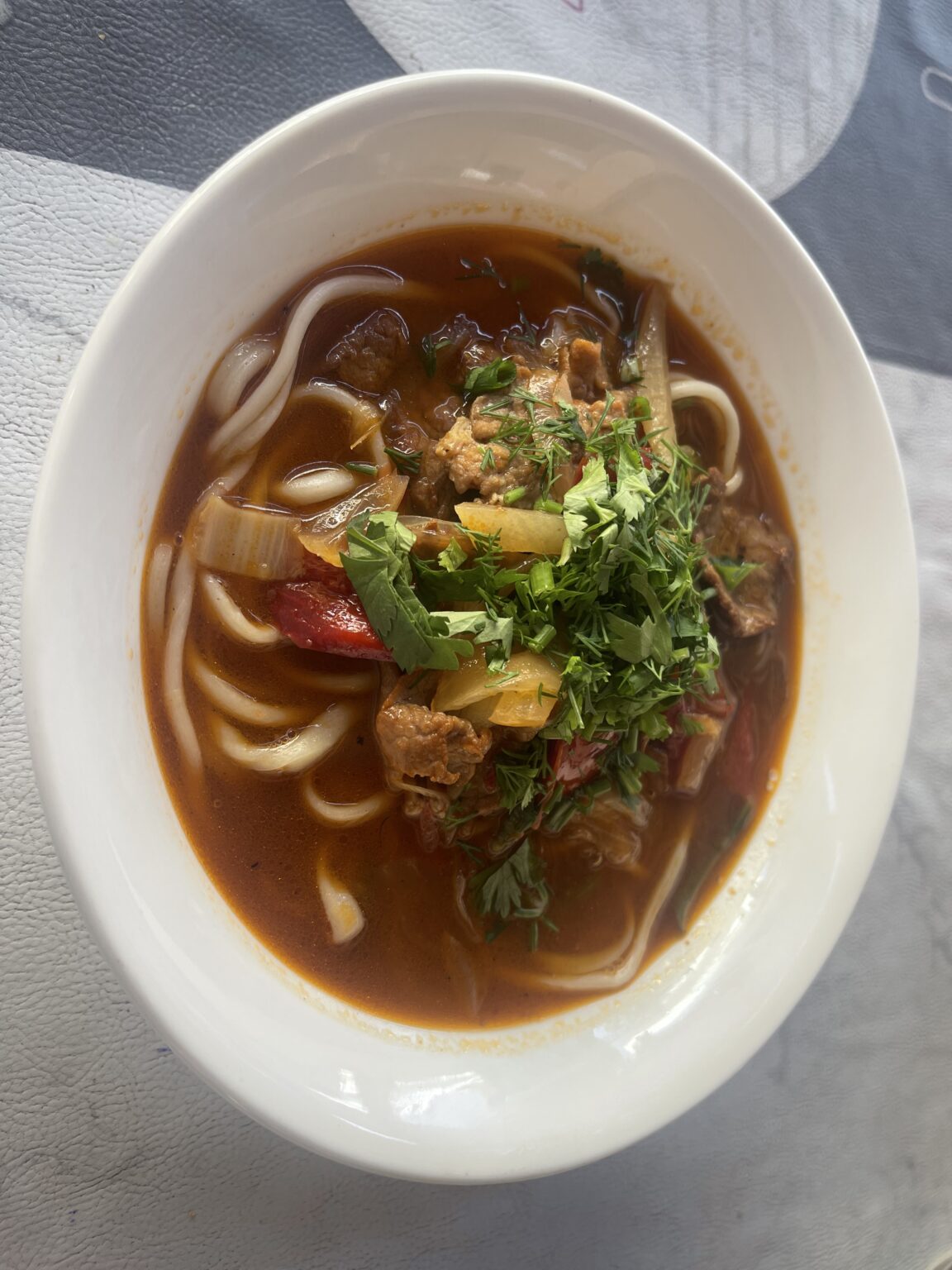
Lagman stands out as the most unique among all Uzbek dishes due to its distinctive blend of spices, which sets it apart from other culinary offerings in Uzbekistan.
Kovurma Lagman (Fried Lagman)
Kovurma lagman is Uzbekistan’s own take on the original Uighur dish. Kovurma lagman, meaning fried lagman, has a thicker consistency than the original version and is more like stir fried noodles cooked in a gravy.
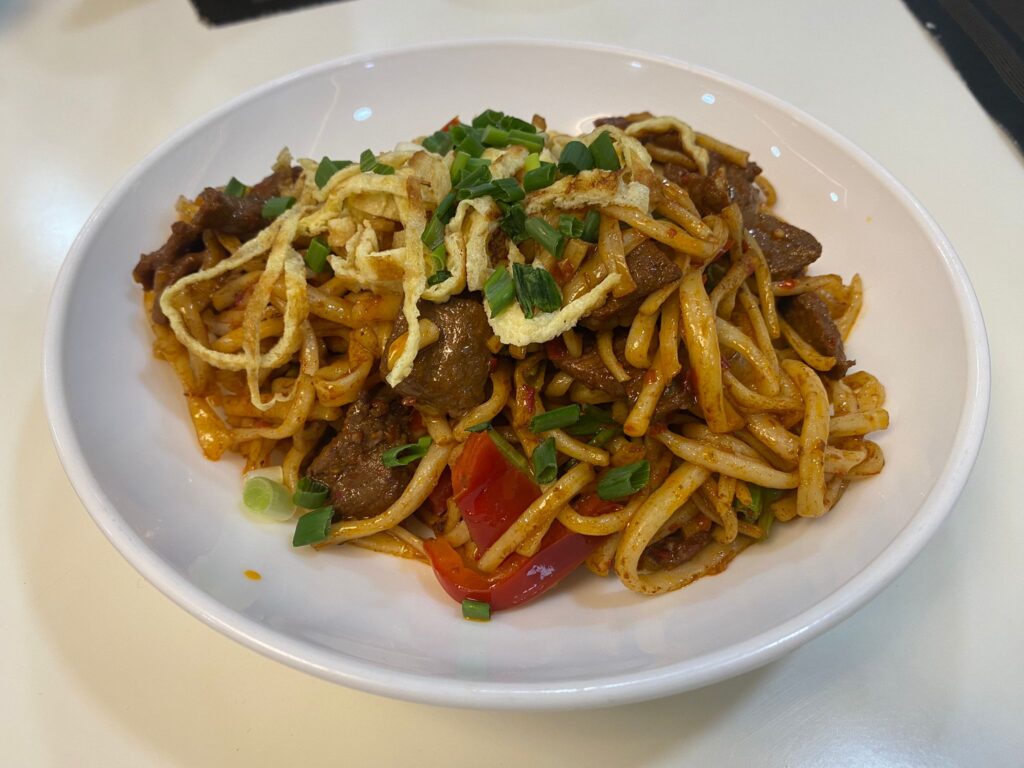
The dish is served with either a friend egg or strips of thin omelet and finely chopped greens.
Somsa
Uzbek somsa, also known as samsa or samosa, are culinary treats that bring a twist to the more familiar South Asian samosas. These tasty snacks are different in texture, filling and cooking method.
The somsa pastry is filled with finely chopped meat, onions and flavors such as cumin, salt and pepper. They can be made of beef, mutton or chicken but vegetable somsas can include potato, spinach or even pumpkin. They’re often sprinkled with sesame seeds for an extra hint of flavor.
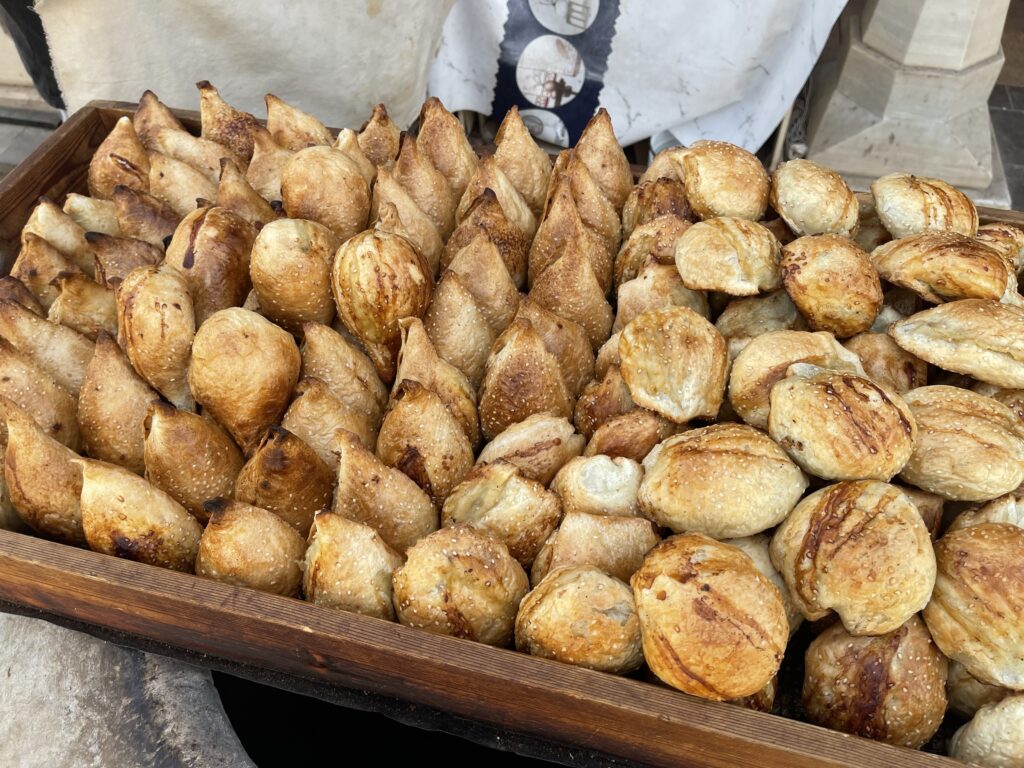
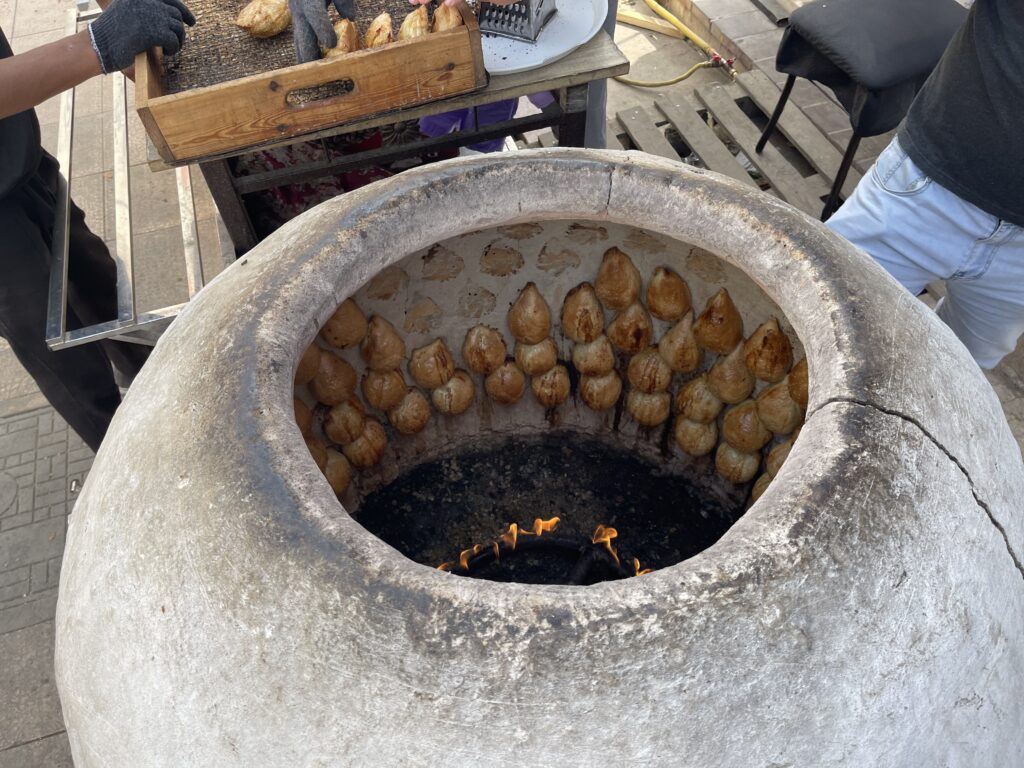
They are then baked in large quantities inside a large oven called a tandoor and covered to keep warm. They’re best enjoyed piping hot and often come with a side dish of Uzbek style tomato sauce. The photos above are from Alay Bazaar in Tashkent.
Nukhat shurak
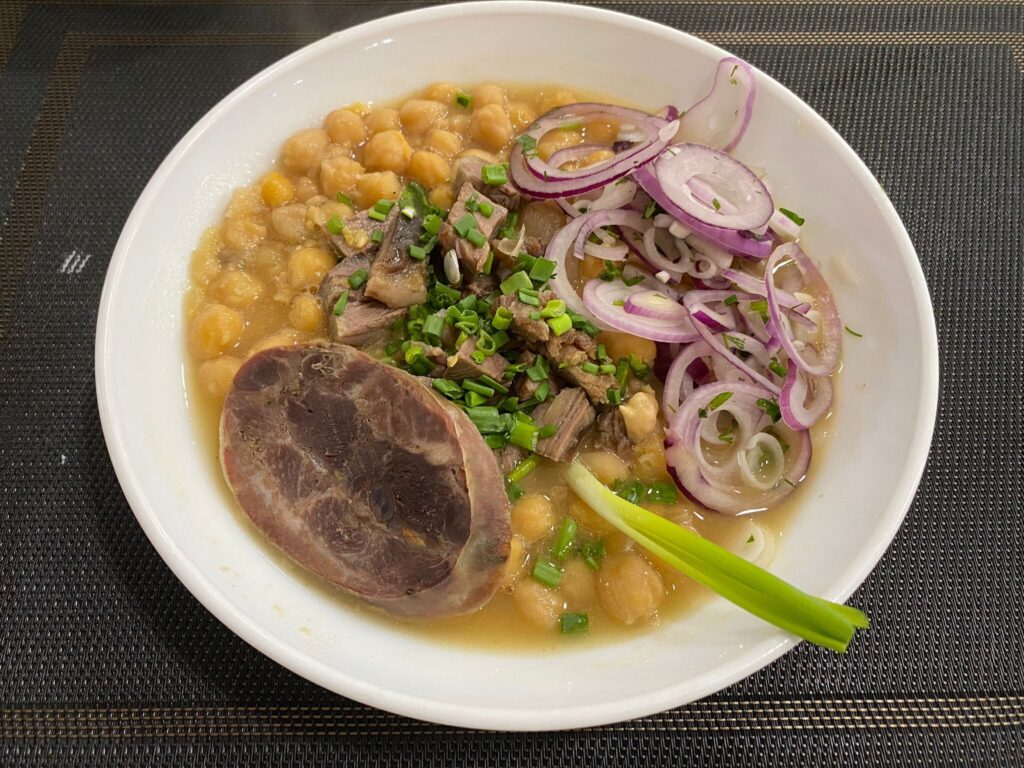
Nukhat shurak is a chickpea stew which is slow cooked with lamb or beef and served with onion, spring onion and sometimes horse sausage. It originated from Samarkand but you’ll find it in many restaurants in Tashkent too.
Shivit Oshi
Shivit Oshi is another noodle dish, this one hailing from the region of Khorezm, home to the Itchan Kala. It’s known for its green colored noodles, which are kneaded in shivit, which means dill in Uzbek. Shivit oshi is cooked with meat and vegetables and served with yoghurt or kefir.
Planning a trip to Uzbekistan to sample the local culinary treats? Read our list of the best food tours in Uzbekistan.
Dessert in Uzbekistan
Desserts are not traditionally a part of Uzbek cuisine but there are a small number of Uzbek sweets. The most popular of all Uzbek sweets are halva and navat. Another sweet Uzbek food known as Sumalyak, is a dessert made from sprouted wheat and consumed only during the Navruz festival. Dried fruits and nuts are also very common to see on an Uzbek dastarkhan.
Halva
Halva is eaten across many countries including Eastern Europe, the Middle East and Central Asia. Characterized by its brittle texture, the word halva means ‘sweetness’ in Arabic.
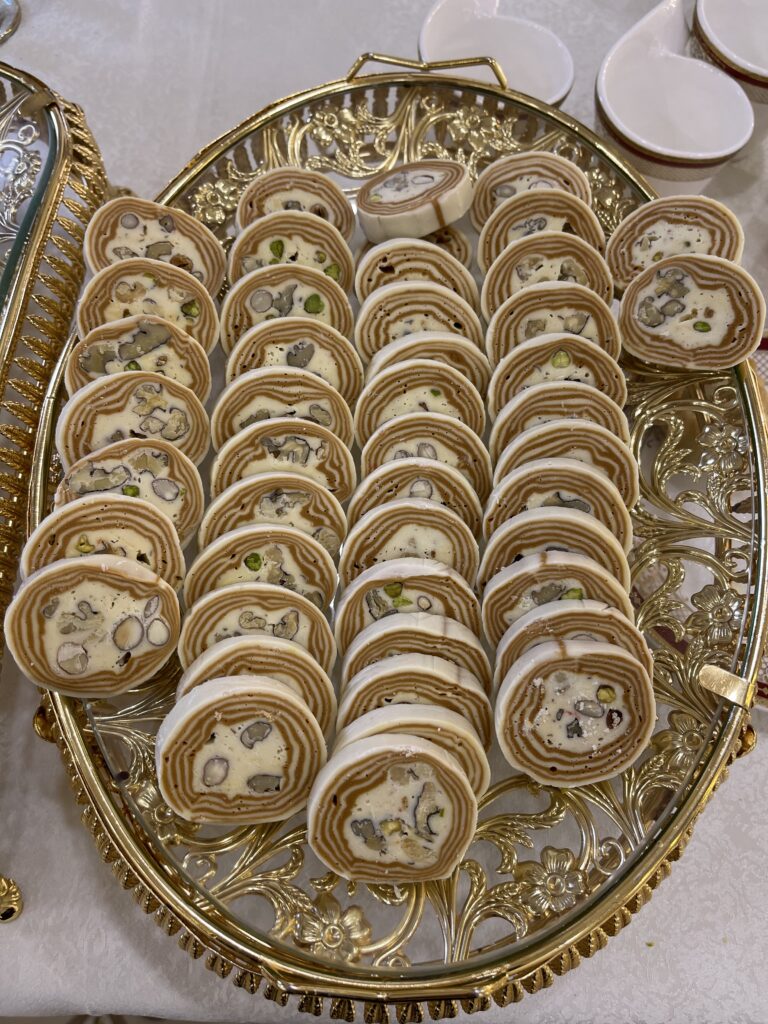
Halva comes in many forms and in Uzbekistan halva can be made from sunflower seeds, sesame seeds, nuts, flour or milk. It is often sprinkled with chopped pistachios although chocolate and vanilla flavor can also be added. For sweetness, sugar or honey is added.
Navat
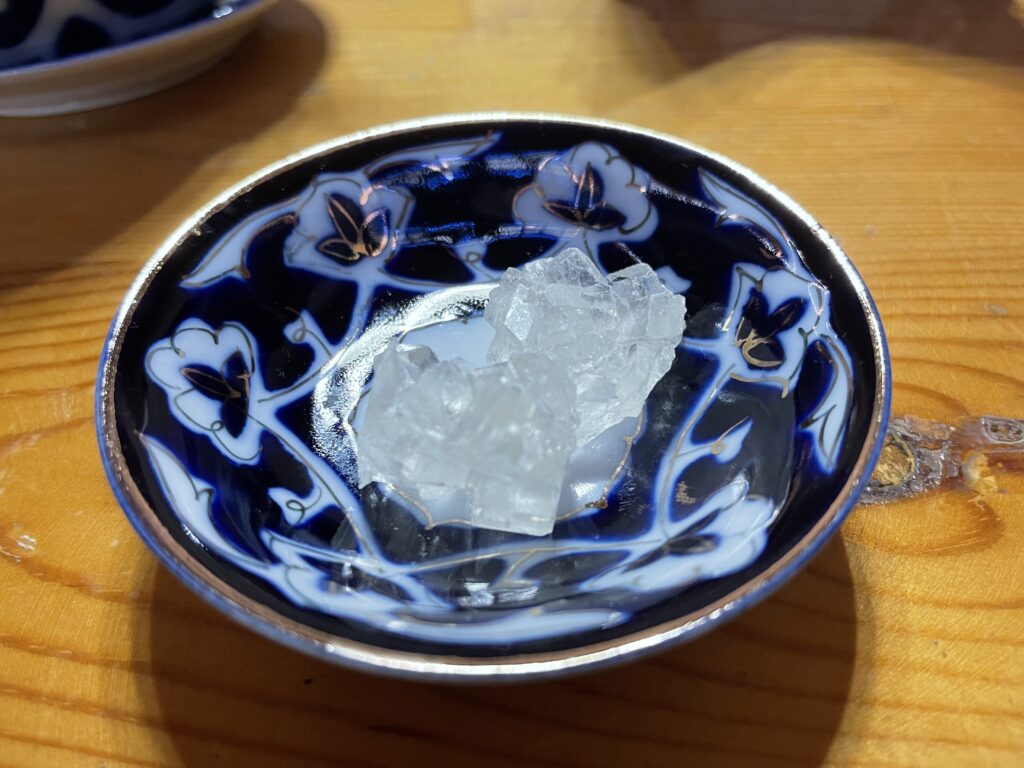
Navat is a form of crystalized sugar and is often consumed with tea. Made from grape juice or highly concentrated syrup. Its color can be anything from pale yellow to dark brown and spices can be added to enhance its flavor.
Navat is used to sweeten tea rather than eaten as a dessert.
Sumalyak
The most renowned traditional Uzbek dessert is sumalyak, a sweet and sticky pudding enjoyed exclusively during the spring festival of Navruz. Making sumalyak is a ceremonial process, as this liquid-like dessert is simmered in a huge pot for a minimum of 24 hours, requiring constant stirring throughout this period.
The end result is a dark brown syrupy drink with a very unique taste! If you happen to be in Uzbekistan on March 21st then you’ll see this being prepared in neighborhoods and outdoor areas such as Navruz Park.
FAQs
Is Uzbek food spicy?
Whilst Uzbek food is not typically spicy, some meals include cayenne pepper which brings a touch of heat to the tongue. Many of the country’s favorite dishes such as plov and norin, actually have no spiciness at all.
Lagman, a Uighur dish adopted into Uzbek cuisine, is perhaps the spiciest Uzbek meal although you can typically choose your own spice level as it is often served with a small side dish of chili sauce.
How healthy is Uzbek food?
Uzbek food doesn’t have the best reputation in terms of health. High in salt and calories and low in fruit and vegetables, Uzbek cuisine has even been described as one of the world’s unhealthiest foods!
Developed over centuries to feed a hungry agrarian society, it is claimed that Uzbekistan has the highest diet-related death rate in the world as modern lifestyles have changed whilst diet has not.
Nonetheless, if you’re traveling to Uzbekistan you’ll still want to give everything a try – just don’t forget to order a side of achichuk or suzma with your meal!
